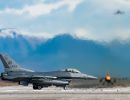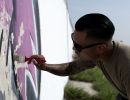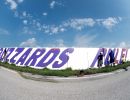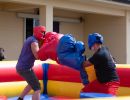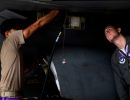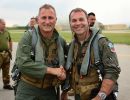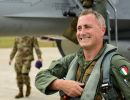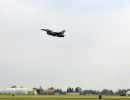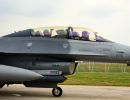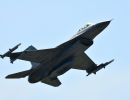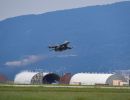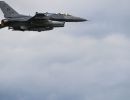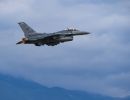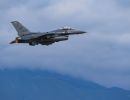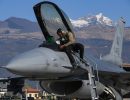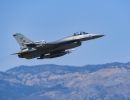"Our squadron has spent the last six months training to get a select cadre of CSAR qualified F-16 pilots," said Lt. Col. T.J. O'Shaughnessy, 510th Expeditionary Fighter Squadron commander deployed to Operation Northern Watch from Aviano Air Base, Italy. "We took our most experienced guys from our squadron and trained them in the CSAR role."
Search and rescue missions, also called "Sandy" missions from the call sign used by Vietnam-era search and rescue pilots, are vital to any operation where planes are sent into potentially hostile areas.
In the event of a downed plane, the Sandy flight snaps into action. Pilots locate the crew on the ground and then coordinate the recovery effort, while providing protection for the downed crew and the recovery assets both inbound and outbound.
The "Buzzards" have been performing the Sandy role in their F-16CG's at Operation Northern Watch since the 75th EFS A-10s returned home to Pope Air Force Base, N.C., in June.
Using the F-16s to augment the A-10s was simply a more efficient allocation of assets to accomplish the mission, O'Shaughnessy said.
"There are a large number of F-16s in the inventory and it will take some of the pressure off the A-10 community and result in a more efficient use of Air Force assets," he said. "As an example, we replaced two units here, an A-10 unit in the CSAR role and an F-15E (Strike Eagle) unit in the emergency defense suppression role. The 510th Fighter Squadron is able to perform the CSAR and EDS roles simultaneously."
What this means for the A-10 crews is a more equitable sharing of time that each asset will have to spend in the areas of responsibility around the world, O'Shaughnessy said.
"The intent is to augment the A-10, not to get the A-10 out of the CSAR role," O'Shaughnessy said. "Both aircraft will perform the CSAR role."
However, nothing is ever as easy as it sounds. O'Shaughnessy said a lot of training time is devoted to keeping the F-16 pilots qualified to perform the Sandy mission.
"The training was very different than what we've done in the past," said Capt. Joe Javorski, 510th EFS pilot. "Most everyone has a working knowledge of how to conduct CSAR operations, but no one has ever conducted training as a primary mission."
"We've been flying here and obviously, we haven't had to do it 'real world' yet, but I think it would be the most rewarding of missions," he said.
The speed of the F-16 and its precision-guided weapons capability would be a definite benefit to the Sandy mission, O'Shaughnesssy said.
"I think the F-16's advantages will allow a quicker response and will add more flexibility to perform the mission," he said. "The A-10 guys do a great job at the Sandy mission, but I think this change is good for the Air Force as well."
The 31st Fighter Wing from Aviano will be performing the Sandy role for about six months, with fellow wing-mates from the 555th EFS arriving to relieve the 510th in the fall. (Courtesy of U.S. Air Forces in Europe News Service)

























